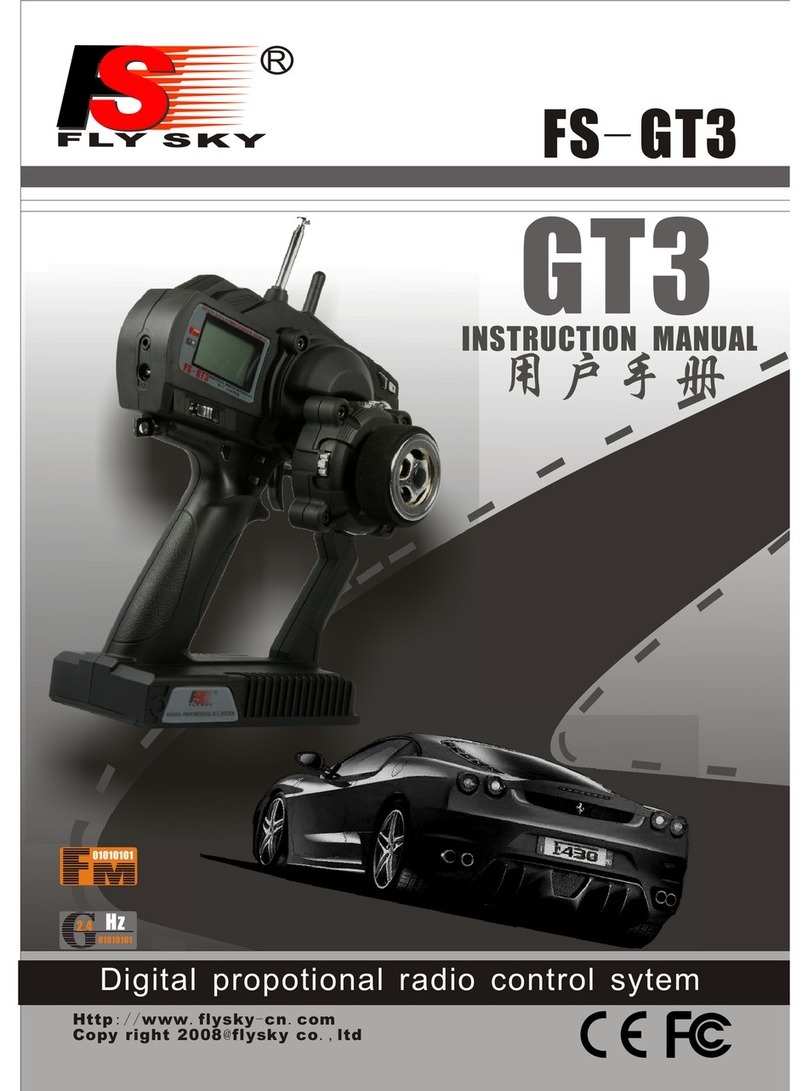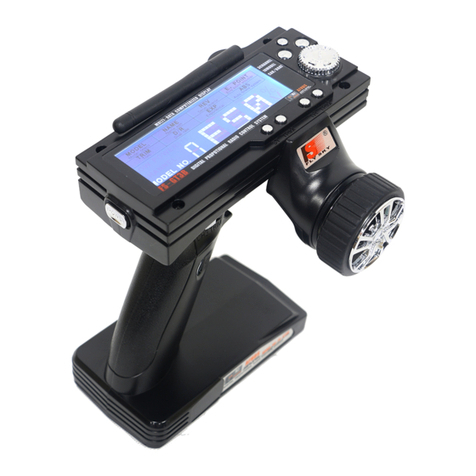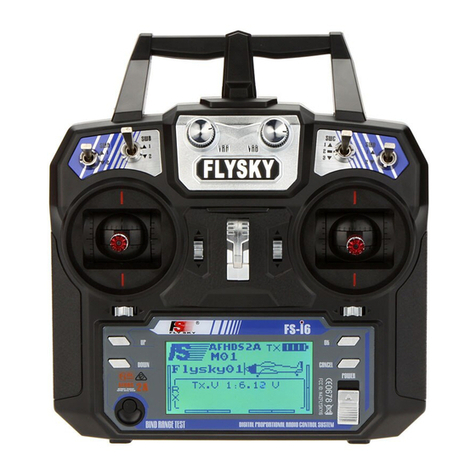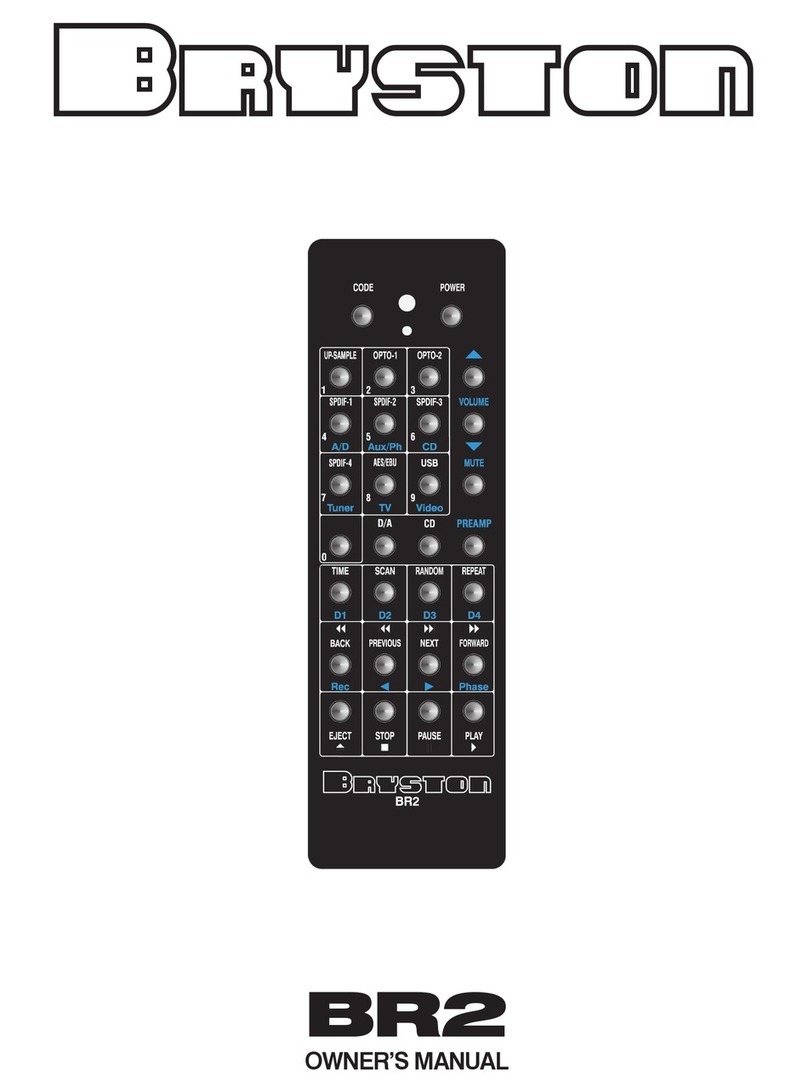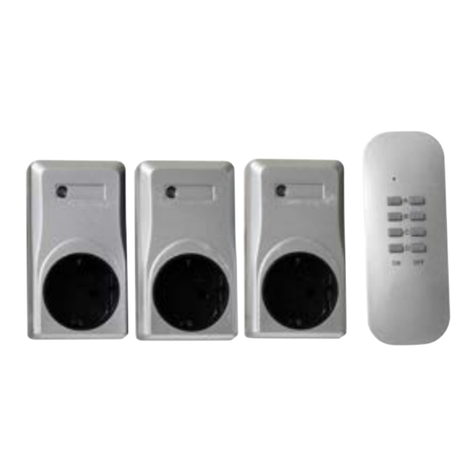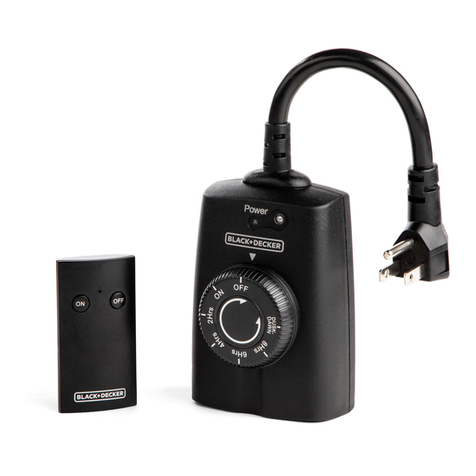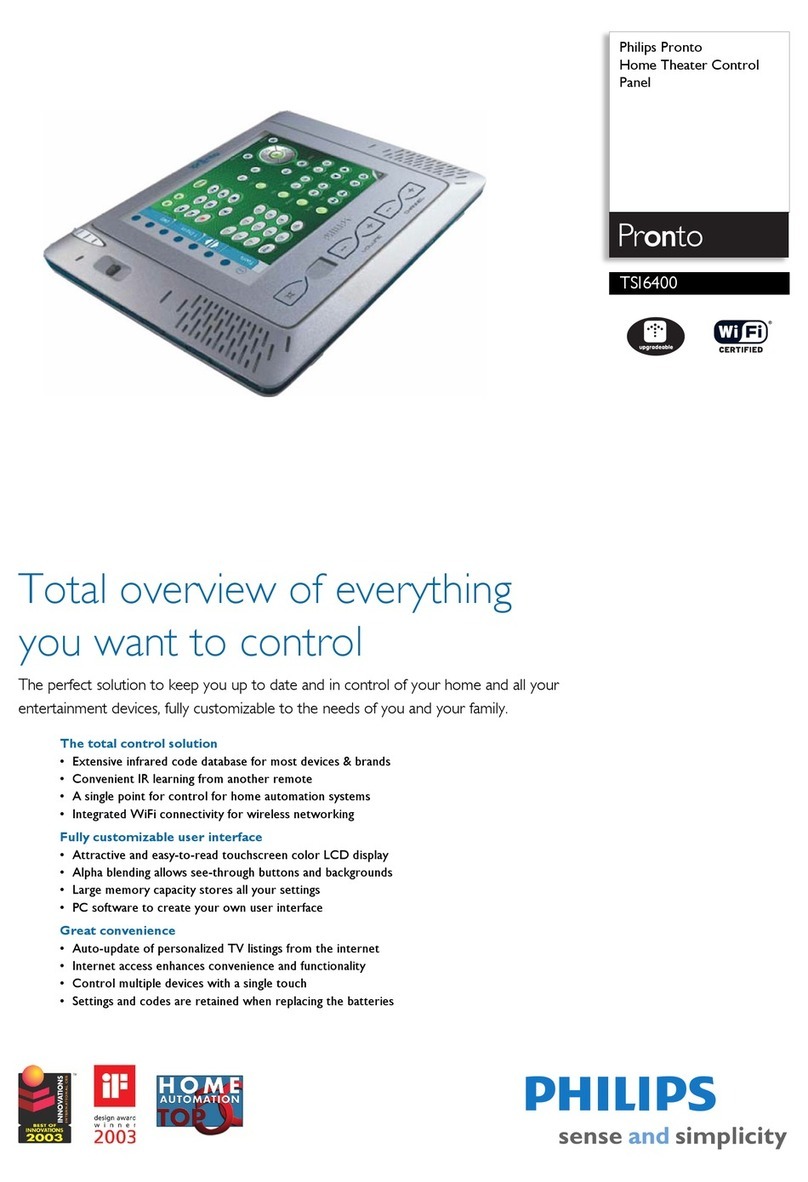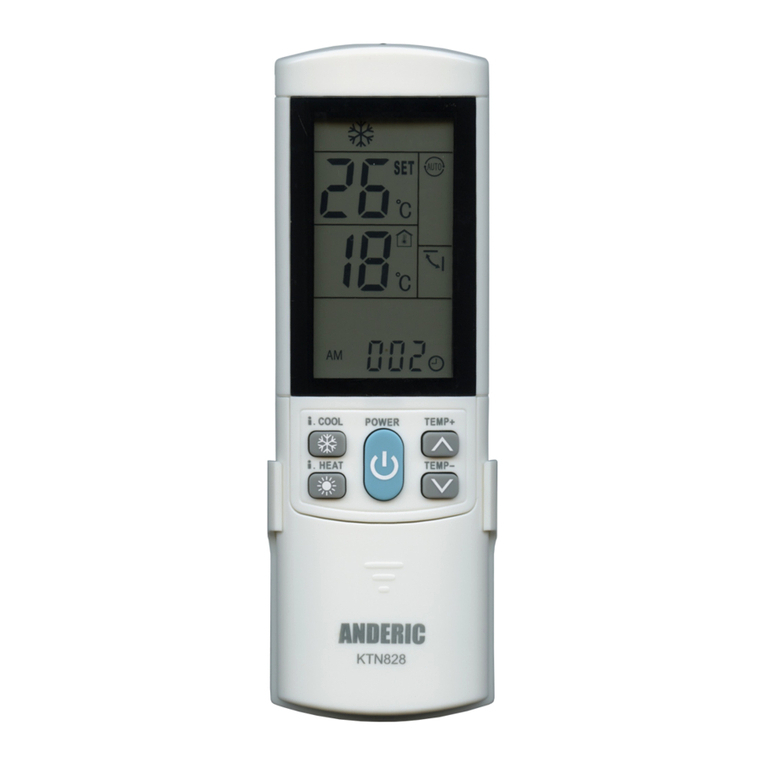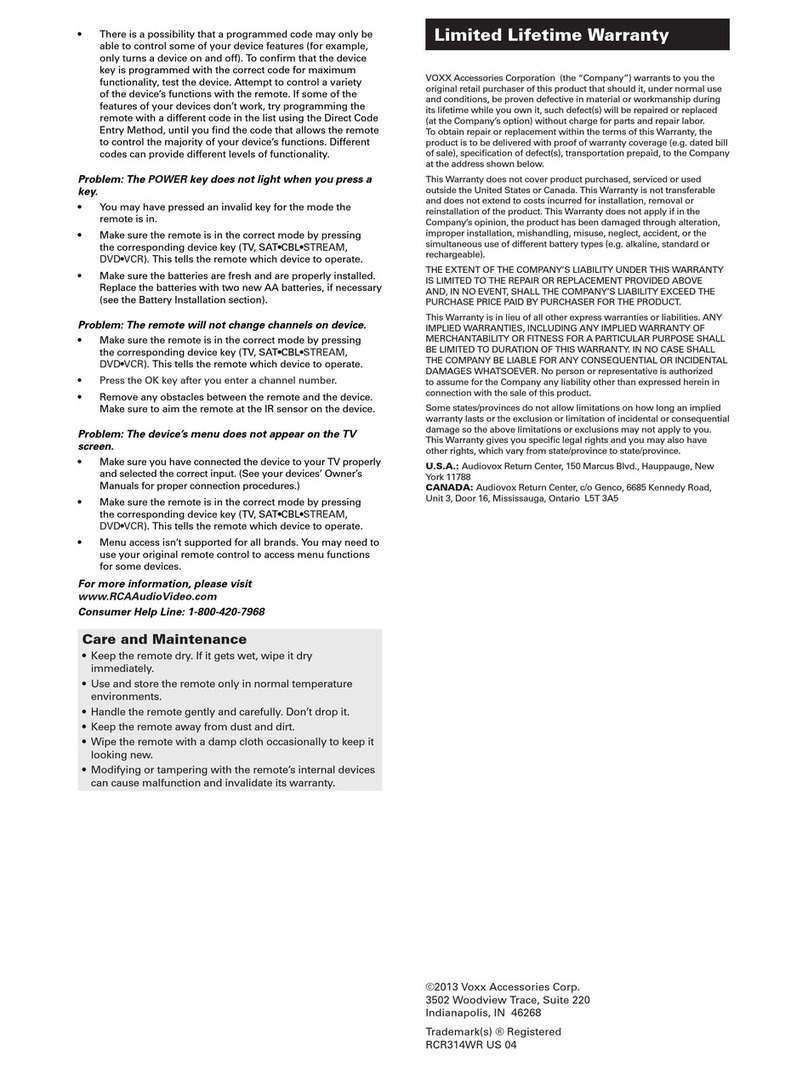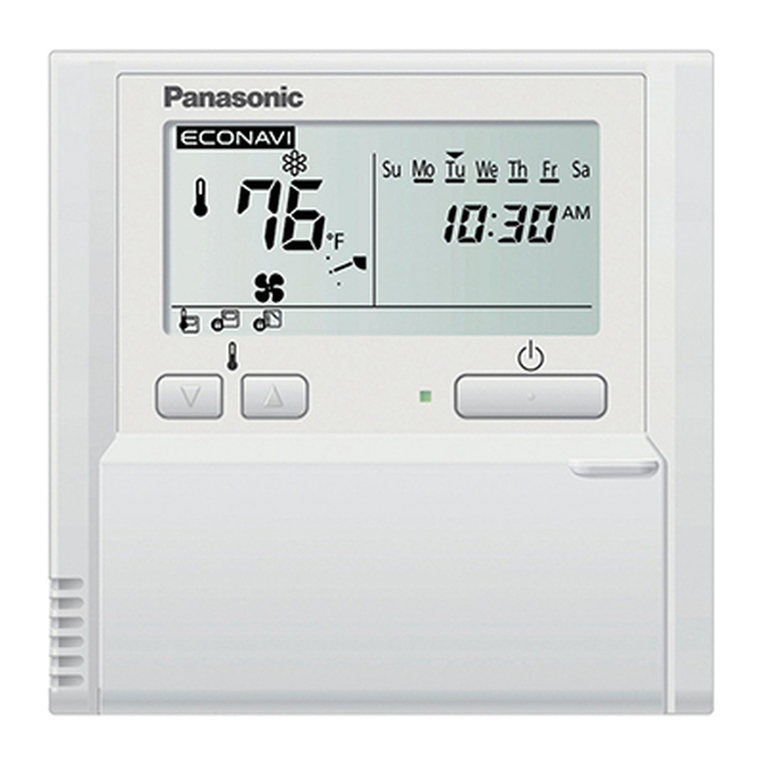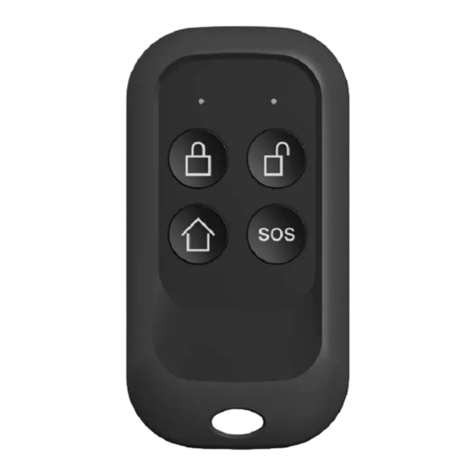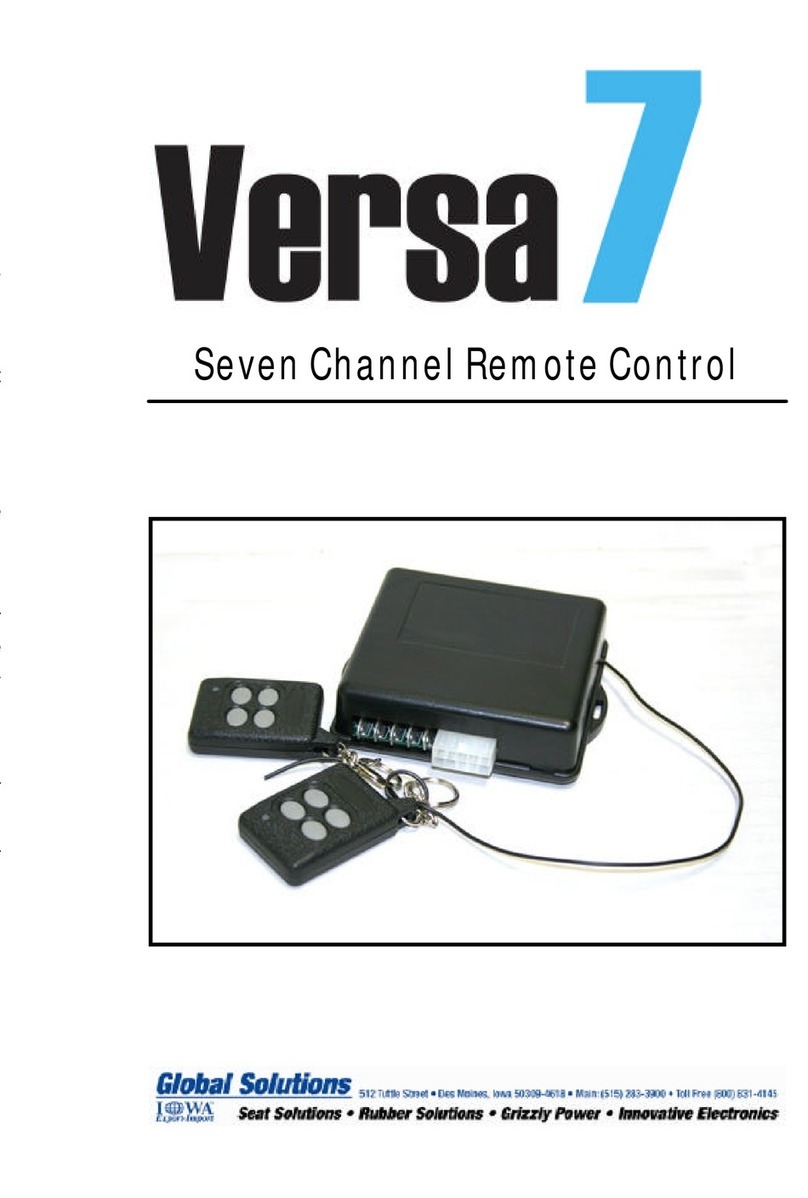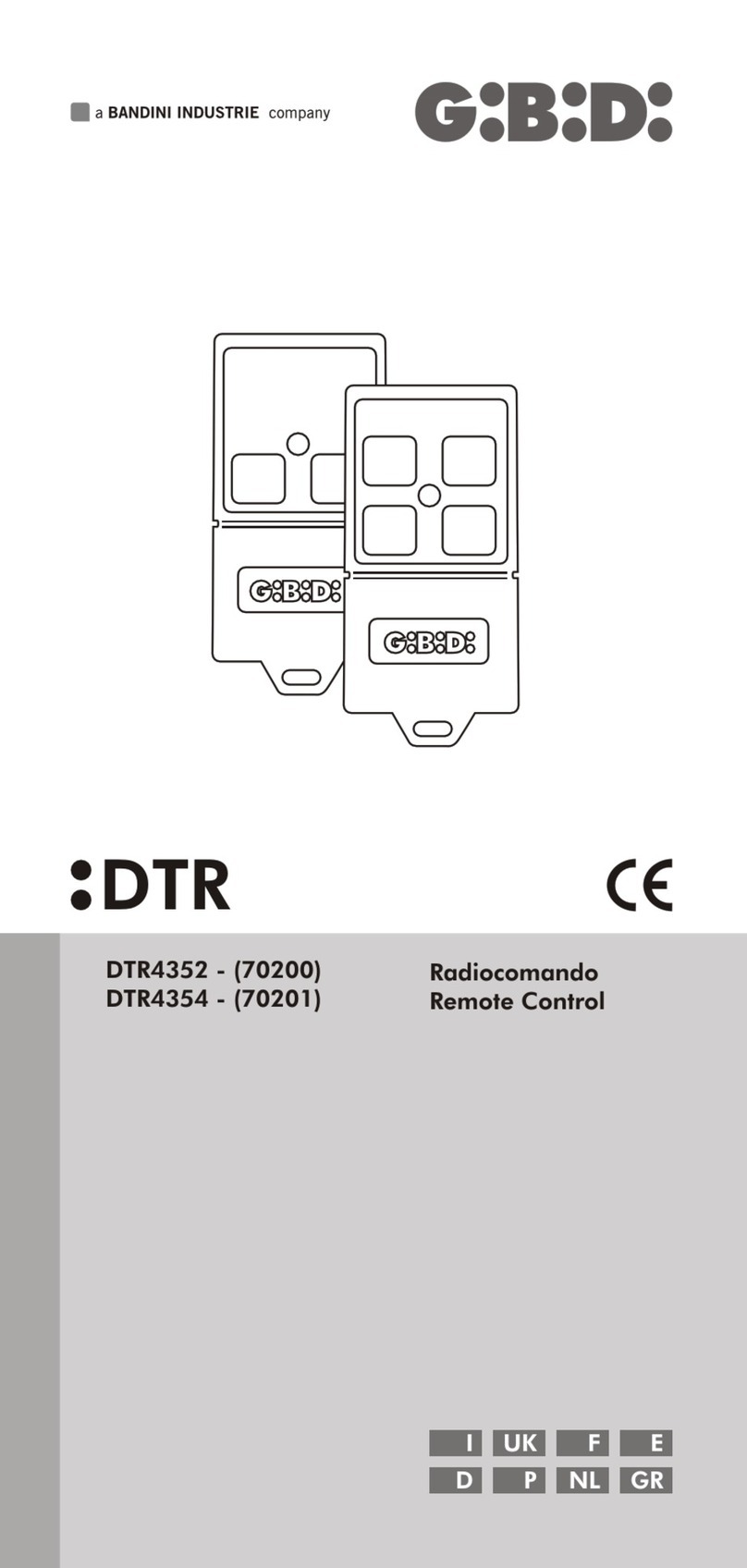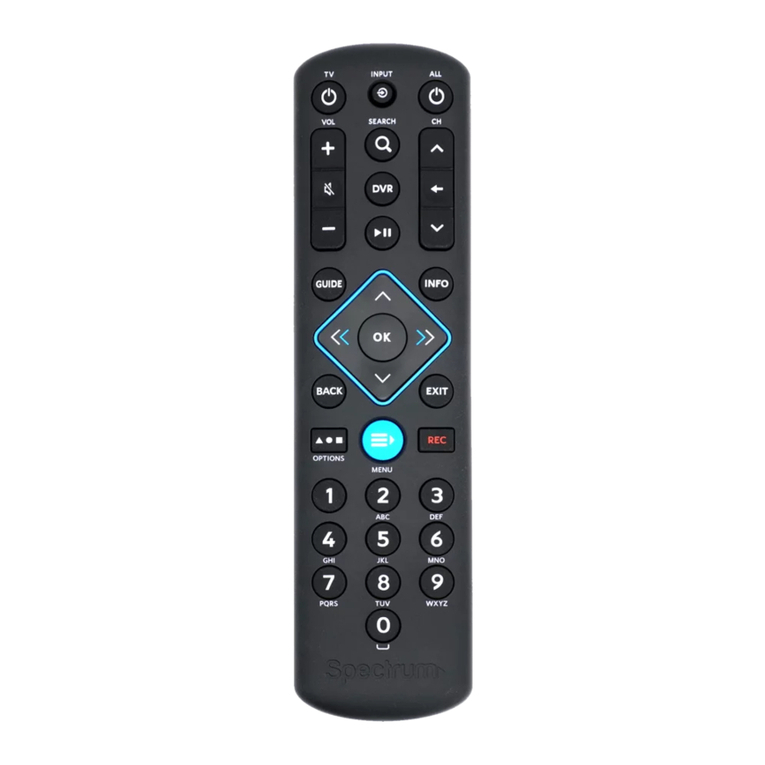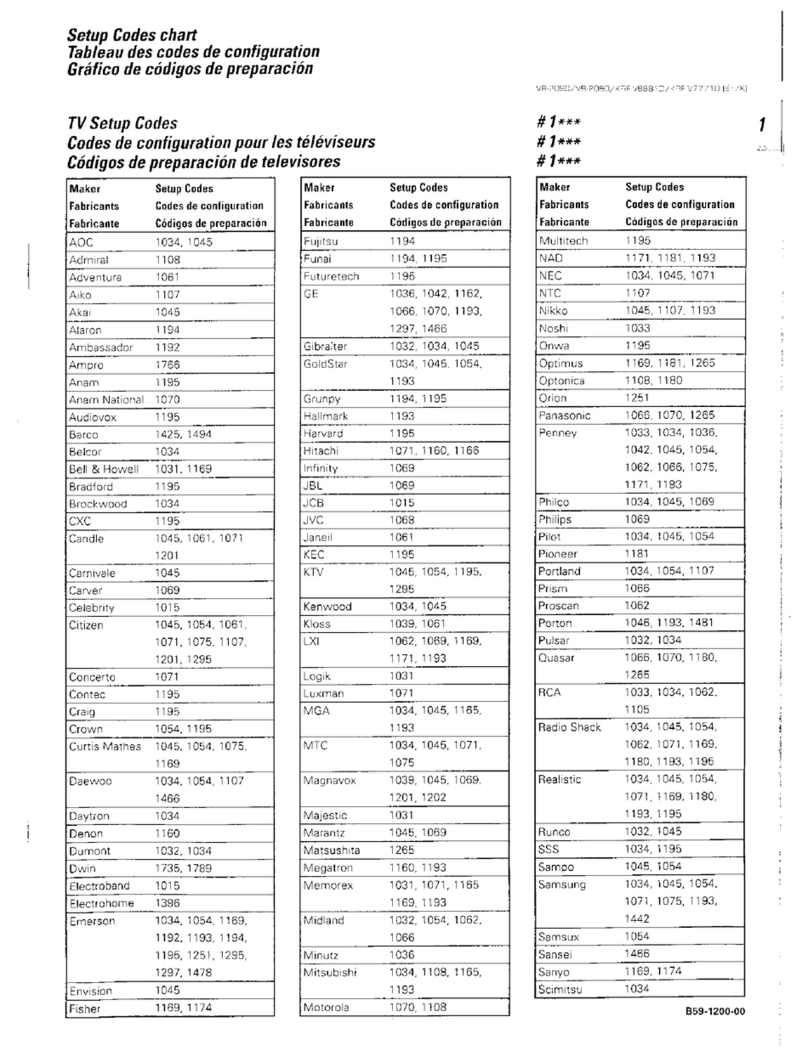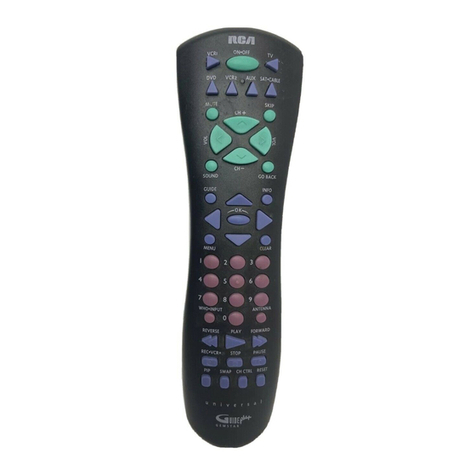Fly Sky FS-l6S User manual

FS-l6S
Copyright ©2020 Flysky Technology co., ltd
USER MANUAL
Digital Proportional Radio
Control System

Thank you for purchasing our product, an ideal radio system for beginners or
experienced users.
In order to ensure your safety, and the safety of others, read this manual carefully
before using this product. If you encounter any problem during use, refer to this
manual rst. If the problems persists, contact your local dealer or visit our service and
support website :
www.ysky-cn.com

Contents
1. Safety...........................................................................................................1
1.1 Safety Symbols .....................................................................................................................................................1
1.2 Safety Guide........................................................................................................................................................1
2. Introduction.........................................................................................................2
2.1 System Features................................................................................................................................................................2
2.2 Transmitter Overview .......................................................................................................................................................3
2.2.1 Transmitter Antenna ....................................................................................................................................................4
2.2.2 Device Holder Mounting Point.....................................................................................................................................4
2.2.3 Switches........................................................................................................................................................................4
2.2.4 Knobs............................................................................................................................................................................5
2.2.5 Keys ..............................................................................................................................................................................5
2.2.6 Gimbals ........................................................................................................................................................................4
2.2.7 Lanyard Eye..................................................................................................................................................................5
2.2.8 Power Switch................................................................................................................................................................5
2.2.9 USB Port........................................................................................................................................................................5
2.2.10 PS/2 Port ....................................................................................................................................................................5
2.2.11 Status Indicator ..........................................................................................................................................................5
2.3 Receiver Overview .............................................................................................................................................................6
2.3.1 Receiver Antenna..........................................................................................................................................................6
2.3.2 Status Indicator.............................................................................................................................................................6
2.3.3 Connectors ...................................................................................................................................................................6
3. Getting Started ............................................................................................7
3.1 Transmitter Battery Installation.......................................................................................................................................7
3.2 Connecting the Receiver and Servos ..............................................................................................................................7
4. Operation Instructions.....................................................................................8
4.1 Power On...........................................................................................................................................................................8
4.2 Binding..............................................................................................................................................................................8
4.3 Pre-use Check...................................................................................................................................................................8
4.4 Power O...........................................................................................................................................................................9
5. System Interface.............................................................................................10
5.1 Home Screen..................................................................................................................................................................10
5.2 Timers..............................................................................................................................................................................10
5.3 Fly Mode..........................................................................................................................................................................11
5.4 TX/RX Battery ..................................................................................................................................................................12
5.5 Display Servos.................................................................................................................................................................12
5.6 Display Sensors...............................................................................................................................................................12
6. Function Settings................................................................................................13
6.1 Reverse ............................................................................................................................................................................13
6.2 End Points .......................................................................................................................................................................13
6.3 Subtrim ...........................................................................................................................................................................13
6.4 Trims ................................................................................................................................................................................14
6.5 Rate/Exp. .........................................................................................................................................................................14
6.6 Rate / Exp.Switch ............................................................................................................................................................14
6.7 Throt Curve .....................................................................................................................................................................15
6.8 Aux. Channels .................................................................................................................................................................15

6.9 Mix .........................................................................................................................................15
6.10 Failsafe...........................................................................................................................................................16
7. System Settings................................................................................................17
7.1 RX Bind ............................................................................................................................................................17
7.2 Models ..................................................................................................................................................................17
7.3 Trainer Model ............................................................................................................................................................17
7.4 Student Model ..........................................................................................................................................................17
7.5 Output Mode ...................................................................................................................................................17
7.6 Sticks Mode ......................................................................................................................................................18
7.7 Throt Mode ..........................................................................................................................................................18
7.8Sticks Adjust ........................................................................................................................................................18
7.9 Bri./Sound .............................................................................................................................................................18
7.10 Screen Lock.............................................................................................................................................................19
7.11 Factory Reset ...................................................................................................................................................19
7.12 Firmware Update ..............................................................................................................................................19
7.13About FS-i6S .................................................................................................................................................19
8.DIY Customization..........................................................................20
8.1 Throt Bracket Installation.............................................................................................................................20
8.2 Throt Spring Installation.....................................................................................................................................21
8.3 Swapping Gimbals................................................................................................................................................22
8.4 Knob Bracket Installation.....................................................................................................................................23
8.5 Knob Spring Installation...............................................................................................................................24
8.6 Device Holder.....................................................................................................................................................25
9. Product Specications.......................................................................................27
9.1 Transmitter Specications ..................................................................................................................................27
9.2 Receiver Specications ........................................................................................................................................27
10. Package Contents....................................................................................28
11. Certification ...................................................................................................29
11.1 DoC Declaration ..........................................................................................................................................................29
11.2 CE Warning ......................................................................................................................................................29
11.3 Appendix 1 FCC Statement ..............................................................................................................................29
12. Environmentally friendly disposal................................................................30

1
• Misuse of this product may lead to serious injury or death. To ensure the safety of you
and your equipment, read this manual and follow the instructions.
• Make sure the product is properly installed in your model. Failure to do so may result in
serious injury.
• Make sure to disconnect the receiver battery before turning o the transmitter. Failure
to do so may lead to unintended operation and cause an accident.
• Ensure that all motors operate in the correct direction. If not, adjust the direction rst.
• Make sure the model ies within a certain distance. Otherwise, it would cause loss of
control.
• Do not use the product at night or in bad weather like rain or thunderstorm. It can
cause erratic operation or loss of control.
• Do not use the product when visibility is limited.
• Do not use the product on rain or snow days. Any exposure to moisture (water or snow)
may cause erratic operation or loss of control.
• Interference may cause loss of control. To ensure the safety of you and others, do not
operate in the following places:
• Near any site where other radio control activity may occur
• Near power lines or communication broadcasting antennas
• Near people or roads
• On any body of water when passenger boats are present
• Do not use this product when you are tired, uncomfortable, or under the inuence of
alcohol or drugs. Doing so may cause serious injury to yourself or others.
• The 2.4GHz radio band is limited to line of sight. Always keep your model in sight as a
large object can block the RF signal and lead to loss of control.
• Never grip the transmitter antenna during operation. It signicantly degrades signal
quality and strength and may cause loss of control.
• Do not touch any part of the model that may generate heat during operation, or
immediately after use. The engine, motor or speed control, may be very hot and can
cause serious burns.
Prohibited Mandatory
1. Safety
1.1 Safety Symbols
Pay close attention to the following symbols and their meanings. Failure to follow these warnings could cause
damage, injury or death.
1.2 Safety Guide
Warning • Not following these instructions may lead to major injuries.
Danger • Not following these instructions may lead to serious injuries or death.
Attention • Not following these instructions may lead to minor injuries.

Digital Proportional Radio Control System
2
FS-l6S
2. Introduction
The FS-i6S transmitter and iA6B receiver constitute a 6 channel 2.4GHz AFHDS 2A digital proportional
computerized R/C system. This system supports quadcopter.
2.1 System Features
The AFHDS 2A (Automatic Frequency Hopping Digital System Second Generation) developed and patented by
FLYSKY is specially developed for all radio control models. Oering superior protection against interference
while maintaining lower power consumption and high reliable receiver sensitivity, FLYSKY's AFHDS technology is
considered to be one of the leaders in the RC market today.
Bidirectional Communication
Capable of sending and receiving data, each transmitter is capable of receiving data from
temperature, altitude and many other types of sensors, servo calibration and i-BUS Support.
Multi-channel Hopping Frequency
This systems bandwidth ranges from 2.4055GHz to 2.475GHz. This band is divided in 140 channels.
Each transmitter hops between 16 channels (32 for Japanese and Korean versions) in order to
reduce interference from other transmitters.
Omni-directional Gain Antenna
The high eciency Omni-directional high gain antenna cuts down on interference, while using less
power and maintaining a strong reliable connection.
Unique ID Recognition System
Each transmitter and receiver has it's own unique ID. Once the transmitter and receiver have
been paired, they will only communicate with each other, preventing other systems accidentally
connecting to or interfering with the systems operation.
Low Power Consumption
The system is built using highly sensitive low power consumption components, maintaining high
receiver sensitivity, while consuming as little as one tenth the power of a standard FM system,
dramatically extending battery life.

33
2.2 Transmitter Overview
VrA
Rudder/Aileron
Throttle/Elevotor
Power switch
Lanyard eye
SwA
SwB SwC
VrB
SwD
Device holder mounting point
Handle
Key 2
Battery cover
USB port
Rudder/Aileron
Throttle/Elevotor
Capacitive touch screen
Power switch
Key 1
PS/2 port

Digital Proportional Radio Control System
4
FS-l6S
2.2.1 Transmitter Antenna
Note • Never grip the transmitter antenna during operation. It signicantly degrades the RF
signal quality and strength and may cause loss of control.
The FS-i6S transmitter has a built-in dual omnidirectional antenna.
Antenna
2.2.2 Mobile device mounting point
Use for securing the mobile device mount.
2.2.3 Switches
Switches SwA, SwB, SwC and SwD can be assigned to both auxiliary channels and other functions to enable quick
control of various perameters. (The way in which the switch is assigned or used may dier depending on the current
menu)
2.2.4 Knobs
VrA and VrB can be assigned to auxiliary channels.
2.2.6 Gimbals
The gimbals are use to control the models control surfaces
including but not limited to ailerons, flaps, rudder and
throttle. It is possible to change the stick mode to match your
personal prefrence in the【Sticks mode】menu.
CH 1
CH 1
CH 2 CH 2
CH 3
CH 4 通道 功能
CH 1 副翼
CH 2 升降
CH 3 油门
CH 4 方向
2.2.5 Keys
Buttons one and 2 can be assigned to auxilary channels or timer control.

5
2.2.11 Status Indicator
The status indicator is used to indicate the power and working status of the transmitter.
• O: The transmitter is powered o.
• Blue light: The transmitter is on and working.
2.2.10 PS/2 Port
This port enables PPM output.
2.2.9 USB Simulatior Function
The system can be connected via a USB cable to a computer for use as a HID device. This function is automatically
activated when connected to a computer and will be recognised as a standard HID controller.
Caution • If the computer does not recognise the transmitter unplug and reconnect the USB
cable.
2.2.7 Lanyard Eye
Use for attaching a lanyard.
2.2.8 Power Switch
Used for powering the system on and o.

Digital Proportional Radio Control System
6
FS-l6S
2.3 Receiver Overview
Caution • For best signal quality, ensure that the receiver is mounted away from motors or metal
parts.
2.3.3 Connectors
The connectors are used to connect the parts of model and the receiver.
• PPM/CH1: Connection of CH1 or PWM output signal.
• CH2 to CH6: Used to connect the servos, power or other parts.
• B/VCC: Used to connect the bind cable for binding, and the power cable during normal operation,in the range of
4.0-8.4V.
• SERVO: For connecting an i-BUS receiver,it can output i-bus/s.bus signal .
• SENS: For connecting sensors.
2.3.2 Status Indicator
The status indicator is used to indicate the power and working status of the receiver.
• O: The power is not connected.
• Lit in red: The receiver is on and working.
• Flashing quickly: The receiver is binding.
• Flashing slowly: The bound transmitter is o or signal is lost.
2.3.1 Receiver Antenna
The FS-iA6B has a dual 26mm omnidirectional antenna.
Antenna
B/VCC
CH2- 6
PPM/CH1
LED

7
3. Getting Started
Before operation, install the battery and connect the system as instructed below.
3.1 Transmitter Battery Installation
Danger • Only use specied battery (X4 AA batteries).
Danger • Do not open, disassemble, or attempt to repair the battery.
Danger • Do not crush/puncture the battery, or short the external contacts.
Danger • Do not expose to excessive heat or liquids.
Danger • Do not drop the battery or expose to strong shocks or vibrations.
Danger • Always store the battery in a cool, dry place.
Danger • Do not use the battery if damaged.
Follow the steps to install the transmitter battery:
1. Open the battery compartment.
2. Insert 4 fully-charged AA batteries into the compartment. Make sure that the battery makes good contact with
the battery compartment's contacts.
3. Replace the battery compartment cover.
3.2 Connecting the Receiver and Servos
Connect the receiver and the servos as indicated below:
Rudder servo
Throttle servo
Elevator servo
Aileron servo
CH1
CH2
CH3
CH4
CH5
CH6
B/Vcc
Switch (Optional)
Battery

Digital Proportional Radio Control System
8
FS-l6S
4. Operation Instructions
After setting up, follow the instructions below to operate the system.
4.1 Power On
Follow the steps below to turn on the system:
1. Check the system and make sure that:
• The batteries are charged and installed properly.
• The receiver is o and correctly installed.
2. Hold the power buttons until screen lights up.
3. Connect the receiver power supply to the B/VCC port on the receiver.
Note • Operate with caution in order to avoid damage or injury.
Note • Make sure that the throttle is at its lowest position and the switches are set to their up
position.
4.2 Binding
The transmitter and receiver have been pre-bound before delivery.
1. Turn the transmitter on, press to select [System], and scroll down and then select [RX bind].
2. Connect the bind cable to the B/VCC port of the receiver.
3. Connect the power to any other port. The indicator will start to ash, indicating that the receiver is in bind
mode.
• After successfully binding the transmitter will automatically exit this menu, then the receivers LED will stop
ashing indicating that binding has been successful.
4. Remove the bind and power cable from the receiver. Then connect the power cable to the B/VCC port.
5. Check the servos' operation. If anything does not work as expected, restart this procedure from the beginning.
If you are using another transmitter or receiver, follow the steps below to bind the transmitter and receiver:
4.3 Pre-use Check
Before operation, perform the following steps to check the system:
1. Check to make sure that all servos and motors are working as expected.
2. Check operating distance: one person holds the transmitter, and another one moves the model away from the
transmitter. Check the model and mark the distance from where the model starts to lose control.
RF Protocol Compatible Receiver
AFHDS 2A X14S,X8B,X6B,iA10B,iA6B
iA6,iA4B,A6,A3,iA8X
• This binding information only applies to the FS-i6S and the FSiA6B receiver, dierent receivers may require
a dierent pocedure to complete the binding process. Please visit the ocial FLYSKY website for the latest
information on compatible receivers and their respective usermanuals.
• All of our products receiver regular updates, please visit our website for more information and rmware
downloads.

9
Danger • Stop operation if any abnormal activity is observed.
Danger • Make sure the model does not go out of range.
Attention • Sources of interference may aect signal quality.
4.4 Power O
Danger • Make sure to disconnect the receiver power before turning o the transmitter. Failure
to do so may lead to damage or serious injury.
Follow the steps below to turn o the system:
1. Disconnect the receiver power.
2. Hold the transmitter's power buttons to turn o the transmitter.

Digital Proportional Radio Control System
10
FS-l6S
5. System Interface
The system interface displays useful information about your model, including timers, y mode and TX/RX
status.
5.1 Home Screen
The main interface displays model.
Fly Mode Status
+ Fly Mode Setup
Menu
TX/RX Battery
Status + Battery
Main Menu
Unlock page
Swipe to the right to display the
servo interface
Swipe to the left to display the
sensors
Timers + Timer
Menu
5.2 Timers
This function can set up to 2 timers at the same time.
Usually used to keep track of total ight time.
Setup:
To enter the timer function touch T1/T2 on the main screen. The system has 2 timers available, both can be
assigned to a switch and have 3 dierent settings.
Start page
Lock/Unlock Button
Fly Mode Status +
Fly Mode off

11
Setup:
1. Select a mode.
• Up: The up timer starts from zero and counts up.
• Down: The down timer starts from a pre selected time and counts down.
• D/U(Down then up): The D/U timer starts from down to 0 from a preset time, then starts counting up again.
2. If necessary set a pre dened time by selecting the [Setup] option. Select the correct decimal and use the
onscreen arrow keys to change the value.
3. Touch [Switch] to enter the switch selection sub menu. If no switch is selected you can press [Start] to start the
time and [Stop] to stop it.
5.3 Fly Mode
Setup:
This mode can store settings that can be recalled by
toggling a switch.
There are several options available:
A: Stores the channel used by the ight controller.
1. Touch the box to the right of the desired channel.
2. Select the correct decimal and use the up and
down arrow keys.
B: Stores the rst selected activation switch.
C: Stores the second selected activation switch.
D: This number represents the currently selected
mode. The name beside the mode number can be
changed.
Touch the box, use the onscreen keyboard to enter a
new name.
The y mode function can store up to 9 dierent y modes which can activated using a switch.
Dierent y modes are assigned using combinations of switches. A 2-way switch will enable you to switch between
modes 1 and 2,two 2-way switches will enable you to 4 fly modes, two 3-way switches will allow you to switch
between all 9 y modes. Use the table below to see which positions are assigned to each mode.
SwB Position SwC Position Mode
Up Up 1
Up Middle 2
Up Down 3
Middle Down 4
Middle Middle 5
Middle Up 6
Down Up 7
Down Middle 8
Down Down 9
B
D
C
E
A
E: Changes the output for each mode.
1. Touch the box to the right of the desired channel.
2. Select the correct decimal and use the up and
down arrow keys.

Digital Proportional Radio Control System
12
FS-l6S
5.5 Display Servos
This function displays channel position in real time.
All changes to channel's functions will be displayed here also.
Setup:
1. Turn on the transmitter and swipe right on the screen.
2. To scroll swipe up and down on the screen.
• Hold your nger on the screen to activate the channel sweep function. The system will ask if you are sure, make
sure that all motors are disconnected in order to prevent damage to the model or harming others.
3. To disable the channel sweep function touch or swipe the screen to the left or right.
5.6 Display Sensors
This function displays all connected sensor names, type, number in real-time.
[Name] Sensor name/type.
[ID] The system gives each sensor connected to the receiver an ID starting from 0 (Transmitter Voltage), so the rst
sensor attached to the receiver will have an ID of 1.
[Value] Displays the sensor output.
All data in this list is displayed in real time, when a sensor is connected or disconnected the system will update the
list.
5.4 TX/RX Battery
This function sets up the receiver and transmitter low battery alarm.
Setup:
1. Click on the TX/RX voltage icon to enter its sub-menu.
2. To edit each setting touch its box and use the on-screen arrows to
change the value.
• The alarm voltage is limited by the set low and high voltage settings.
For example if the high voltage is set to 6V and the low 4V then the
alarm must be set between 4.1V and 5.9V.
• When the voltage drops below the alarm voltage the system will alert
the user via an audio alarm and an on-screen warning.
• The box marked in red below shows if an external or internal voltage
sensor is being used. If a tick is displayed then the system is using
the internal voltage sensor.

13
6. function Settings
This section details functions and their use.
6.1 Reverse
The reverse function changes a channels direction of movement in relation to its input. For example, if the blades
are spinning in the wrong direction, pushing the model into the ground instead of taking o, this function can be
used to correct this.
6.2 End Points
The end points function changes the range of movement available to a channel. This can be used to limit the tilt of
the model, so that it is easier to control.
The left box is the low end points, the right box is the high end points, marked below as low being blue and red
being high.
Setup:
To change between normal and reverse touch the box to the right side of
the desired channel.
Nor = Normal, Rev = Reverse.
Select the icon to save and return to the previous menu.
Press the To reset the function to its default settings.
Setup:
1. Touch the low or high end points box.
2. Touch the desired decimal to change then use the onscreen up and
down arrows to change the value.
6.3 Subtrim
Subtrim changes the center point of the channel. For example, if a model is always drifting to one side, the sub trim
can be used to x this.
Setup:
1. Touch the box to the right of the desired channel.
2. Select the correct decimal and use the up and down arrow keys.

Digital Proportional Radio Control System
14
FS-l6S
Setup:
This function is only available on channels 1, 2 and 4, the selected
channel is displayed under the back button.
[Rate] Changes the channel's range (100% being full range).
[Exp.] Changes the amount of curve in the sticks response.
The currently selected variable will be highlighted in black.
The X on the graph shows the sticks (switches and knobs) current
position.
6.5 Rate/Exp.
This function creates a curve for the stick inputs and outputs.
The Normal/Sport mode selection can be assigned to a switch.
When applied to a channel this function will change the response curve.
Usually the entire range of the servo movement will be mapped in this function.
6.4 Trims
The trims function changes the center point for the 4 stick axis. If a control surface does not match up exactly to its
expected position the trim function can be used to bring it back into alignment.
• If the throttle is not self-centering, channel 3 can not be adjusted.
This function is for slight adjustments only, if parts of the model are still out of alignment consider adapting the
model.
Setup:
1. In the function menu select [Trims],Select "On" to activate.
2. Go to the servo display screen:
To adjust the right stick: Hold key 1 then hold a sick on an axis to adjust
in that direction, hold until the desired change has been made.
To adjust the left stick: Hold key 2 then hold a sick on an axis to adjust in
that direction, hold until the desired change has been made.
The Y axis represents the channels output.
Curve's create a non linear relationship between input and output.
1. Touch [Rate/Exp.] in the function menu.
2. Select [Rate] or [Exp. ].
3. Click the or icons to change the value.
4.Once a switch has been assigned, toggle the switch (see [6.6 Rate / Exp. Switch] for switch assignment
instructions). Repeat the above steps for the other mode as needed.
6.6 Rate/Exp.Switch
This function can be assigned to a switch to alternate between Normal/
Sport status data in Rate/Exp.
Function setting:
1. Press [Rate/Exp.Switch] to enter the menu;
2. Press the name of the switch, the corresponding switch pops up,
select the switch you want to set;
3. Press Back to save the settings.

15
Setup:
The X on the graph shows the sticks current position and output.
The X axis represents the current stick position and the Y axis displays
[L] Is represents the throttle at its 0 position.
The currently selected variable will be highlighted in black.
1. Touch [Throt Curve] in the function menu.
2. Select a point by touching it.
2. Click the or icons to change the value.
6.7 Throt Curve
The throttle curve function adds a curve to the throttle stick's input. This curve has 5 points that can be set to create
a custom curve.
6.8 Aux. Channels
The auxiliary channels can be used to control additional part of a model such as landing gear or lights.
Setup:
1. Select channels using the left or right arrow keys on the screen on
either side of the channel name.
2. The left box below the channel name allows the user to pick the type
of control for that channel, Nul, VRx, STx, KEY and SWx.
• If the channel is in use for a y mode, the system will inform the user
and prevent any changes to that channel.
6.9 Mix
The mix function creates a mix between 2 dierent channels. For
example, it is possible to make a mix between rudder and ailerons, so
whenever the model rolls, the rudder will move automatically to perform
a turn.
Setup:
[Master]: This channel will control the slave.
[Slave]: This channel is controlled by the master.
[oset]: Oset works like trim or sub trim allowing for the center position of the slave channel to be changed.
[Pos.]: Changes how much the slave will move in relation to the master in a positive movement. At 50% when the
master moves to 100% of its positive motion, the slave will move to positive 50%.
[Neg.]: Changes how much the slave will move in relation to the master in a negative movement. At 50% when the
master moves to 100% of its negative motion, the slave will move to negative 50%.
1. If the mix is not already disabled turn it o by touching the box labeled "on".
2. Select a master by touching the box to the right of the master channel and choose a channel from the list.
3. Select a slave by touching the box to the right of the slave channel, then choose a channel from the list.
4. If needed, set an oset on the slave channel. Select the box to the right of the oset function, select the correct
decimal and use the up and down arrow keys to change the value.
5. Set the positive/negative ratio using the box to the right of "pos", select the correct decimal and use the up and
down arrow keys to change the value.

Digital Proportional Radio Control System
16
FS-l6S
The failsafe function enables you to pre-set channel positions for the receiver in case of signal loss.
6.10 Failsafe
Setup:
[Ch1:O ]:means that in case of a loss of signal, the corresponding ser-
vo will keep its last received position.
[Ch3 :100%]:If it displays a percentage, the servo will instead move to
the selected position.
1. To setup a failsafe position on a channel, select the channel from the
list, to select the channel touch the box to the right of the channel
name.
2. The box next to the channel name should display "On", to activate the
failsafe touch the box. The box should now display "O".
3. Move and hold the channel at the desired position, then while
keeping the channel at the desired value touch the setup box.
You can set the failsafe position for all channels with the [All channels]
button at once. To do so:
1. Turn all the channels on as stated above, hold all the channels in the
desired position and select "Set all" at the bottom of the list.
2. The system will prompt for a conformation, select "Y" for yes.
Table of contents
Other Fly Sky Remote Control manuals
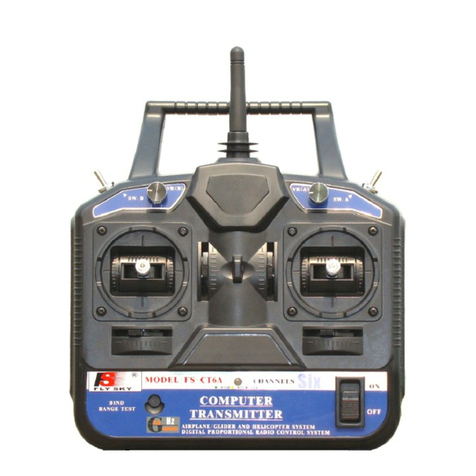
Fly Sky
Fly Sky FS-CT6A User manual
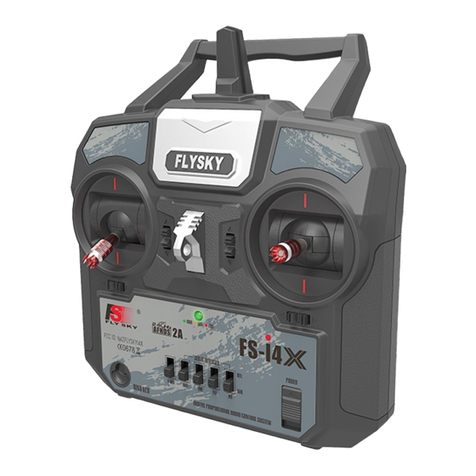
Fly Sky
Fly Sky FS-i4X User manual

Fly Sky
Fly Sky FS-CT6A User manual

Fly Sky
Fly Sky FS-TH9X User manual
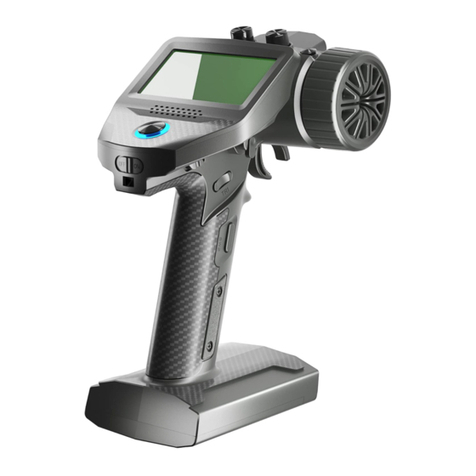
Fly Sky
Fly Sky FS-G7P User manual
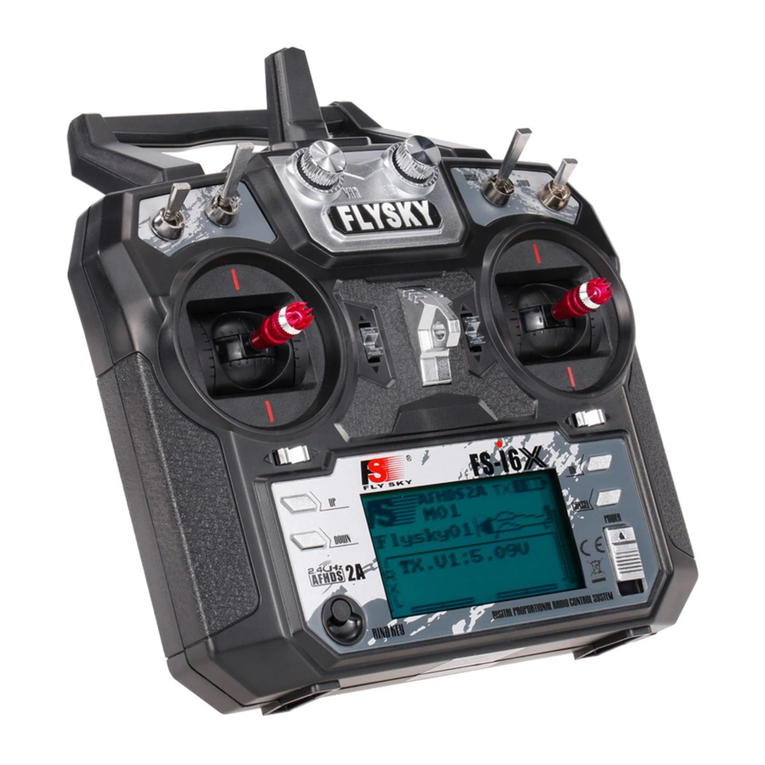
Fly Sky
Fly Sky FS-i6X User manual
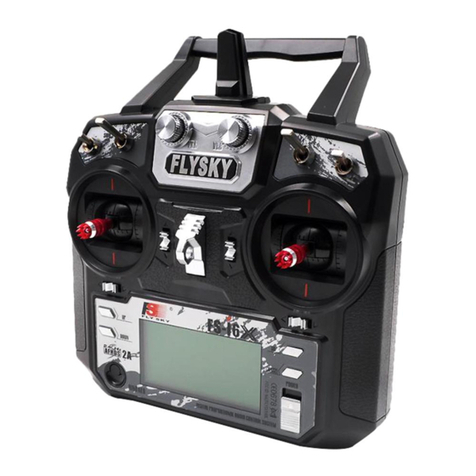
Fly Sky
Fly Sky FS-i6X User manual
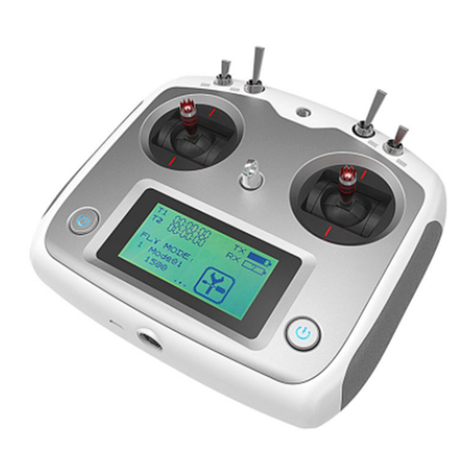
Fly Sky
Fly Sky FS-i6S User manual
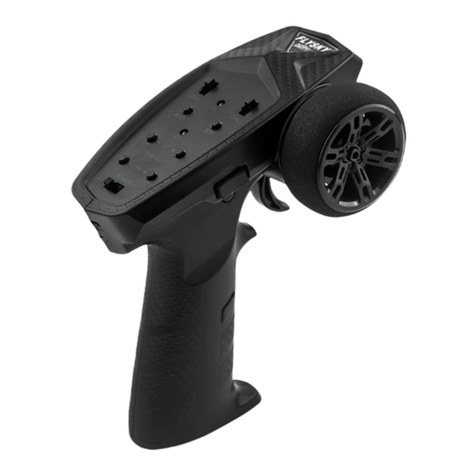
Fly Sky
Fly Sky FS-MG7 User manual
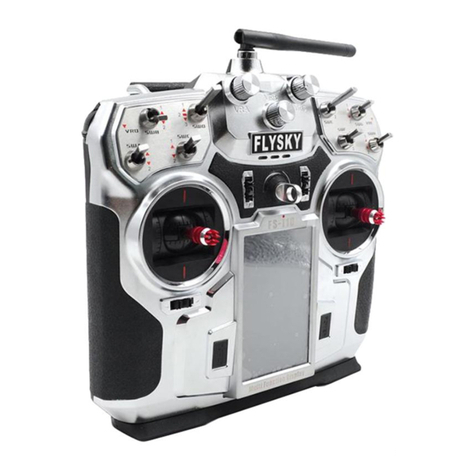
Fly Sky
Fly Sky FS-i10 User manual

Fly Sky
Fly Sky FS-i6 User manual

Fly Sky
Fly Sky FS-i10 User manual
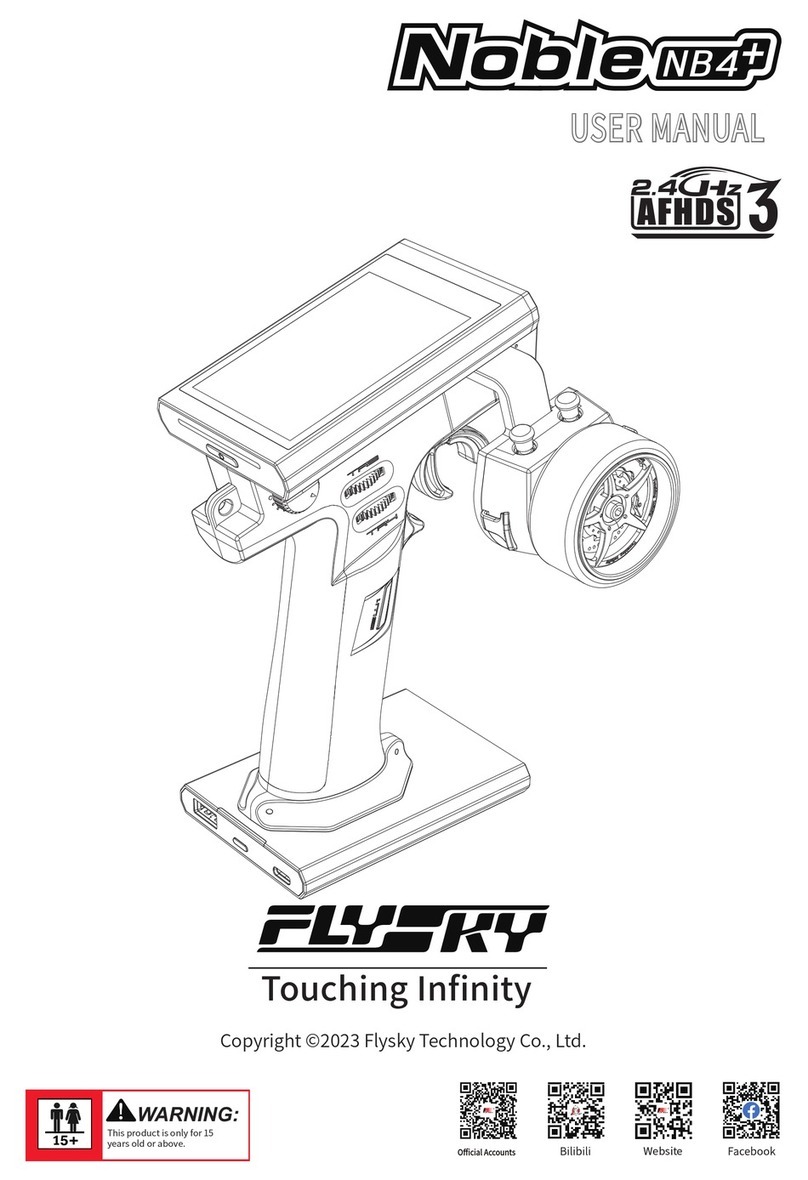
Fly Sky
Fly Sky Noble NB4+ User manual
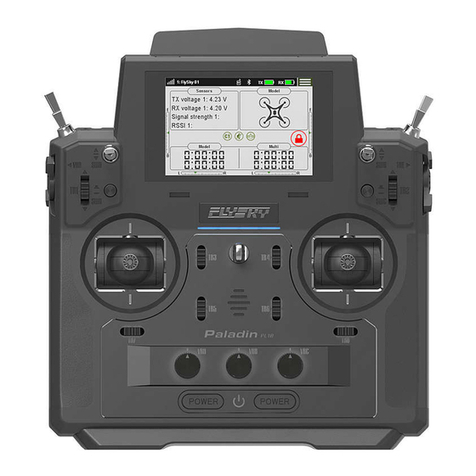
Fly Sky
Fly Sky Paladin PL18 EV User manual
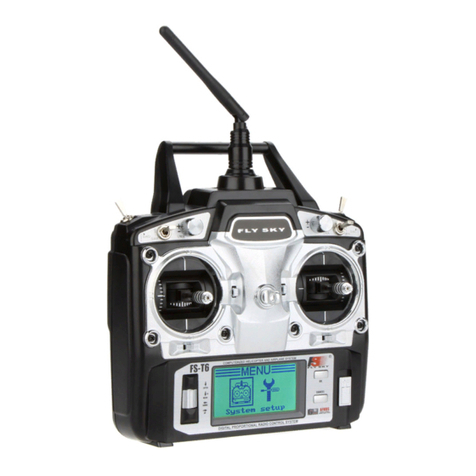
Fly Sky
Fly Sky FS-T6 User manual

Fly Sky
Fly Sky FS-MG41 User manual
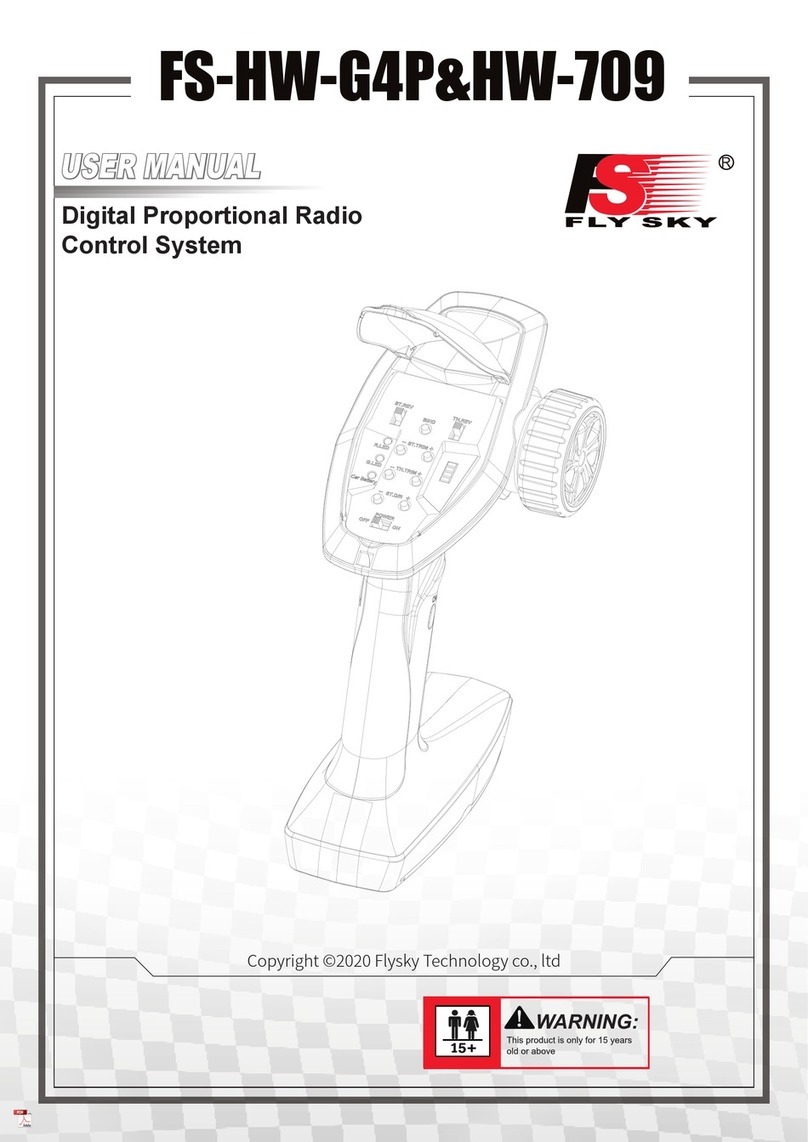
Fly Sky
Fly Sky FS-HW-G4P User manual
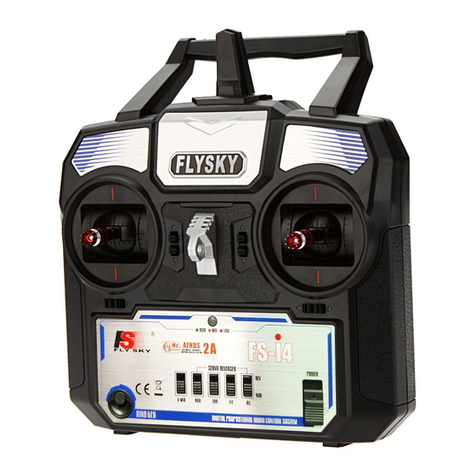
Fly Sky
Fly Sky FS-I4 User manual
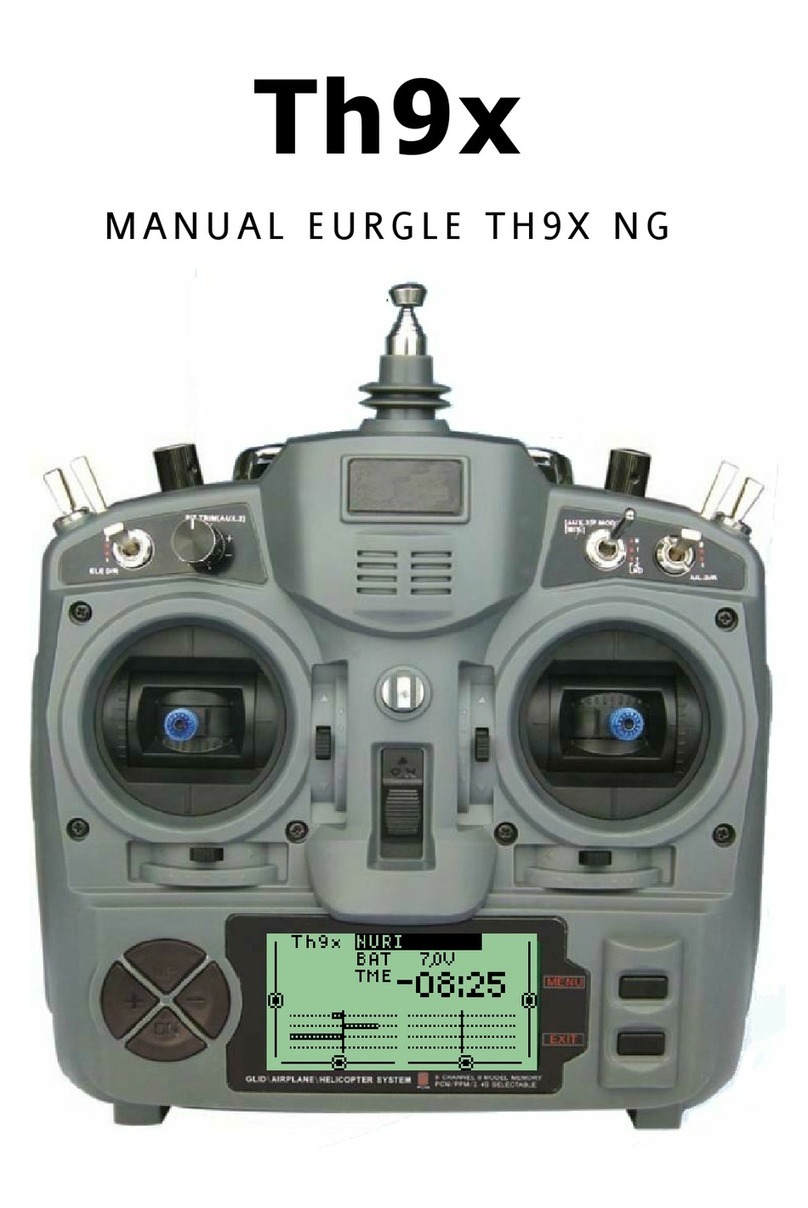
Fly Sky
Fly Sky Eurgle th9x User manual
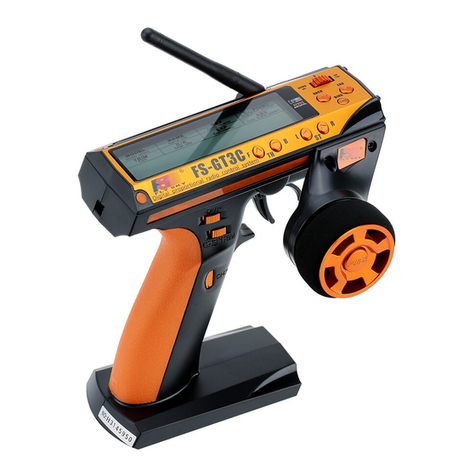
Fly Sky
Fly Sky FS-GT3C User manual
